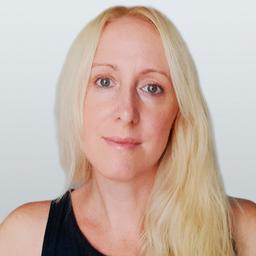In 1979, when Amy Ziff was nine years old, she developed severe migraines accompanied by uncontrollable shaking. Diagnosed with a chronic, progressive neurological condition, doctors said she would inevitably end up on painkillers and die prematurely—a diagnosis her mother rejected. After going from doctor to doctor, her mother finally found an allergist who, Ms. Ziff claims, saved her life.
She kept a food diary, and a battery of allergy testing revealed she was highly allergic to many things in her home and the environment—like dust, dust mites, dander, mold, trees, grass, her cats, her dog, and her clothing. After eliminating her exposure to many of those allergens and changing her diet, her symptoms disappeared—and she became a “normal fourth-grader.” Although she is still highly sensitive, she now knows how to manage her sensitivities.
This formative experience in her childhood would inform her choice of career—raising awareness about the toxic chemicals that have become so pervasive in the world and our lives.
According to Ms. Ziff, approximately 7000 chemicals are added to the marketplace every year, and most manufacturers do not conduct any premarket studies—meaning these chemicals come onto the market without our knowing their effects on the environment and our health. She says we have become a “chemicals first, consequences second” society.
- Processed foods.
- Pesticides.
- PFAS (per-and polyfluoroalkyl substances).
- Plastics and plasticizing chemicals.
- Performance flame retardants.
- Product pollution.
And then there are the foods we eat.
And the list goes on.
The Food We Eat
Ms. Ziff offered some practical tips on removing foods and chemicals and what we can replace them with to decrease our toxic load and boost resiliency.- Avoid chemical ingredients—eat whole foods, organic when possible.
- Remove processed foods from your diet.
- Remove processed oils from your diet.
- Avoid dyes and flavorings.
- Avoid using plastic wrap and baggies, as they can leach chemicals into your food.
- Avoid soda and juices that contain chemical ingredients and added processed sugars.
- Avoid GMOs.
- Opt for prepared foods that use fewer ingredients.
- Eat whole foods (particularly plants) at every meal.
- Eat foods grown organically without pesticides when possible.
- Eat the rainbow daily—eat a variety of fruits and vegetables of every color which will ensure you are getting a wide variety of vitamins and nutrients.
- Soak fruit and vegetables in 2 tsp baking soda and water for cleaning.
- Filter your water.
- Drink kombucha or plain seltzer with a squeeze of fresh lemon or lime.
- Eat raw nuts and seeds without oils or flavorings.
- Eat low in the food chain, meaning eating mostly plants as this decreases toxins and uses fewer resources.
- Fast for at least 12 hours each night so your body can rest and detox.
The Road Forward
Knowing where to begin can seem overwhelming once you learn about the sheer volume of chemicals we encounter daily and how they wreak havoc on our health. However, Ms. Ziff explains that we can do simple, natural things to protect ourselves and cultivate our health—some of which are listed below to help you get started:- Breathe. Deep breathing nourishes your cells, lowers blood pressure, and benefits the nervous system. Breathing exercises also help reduce stress and improve cognitive function and sleep—a time when the body does vital healing and detoxifying.
- Sleep. Especially vital for children, sleeping should be done in a cool, clean, dark room without electronic devices. Keep all electronics in another room and limit screen time before bedtime.
- Sweat. Sweating is one of the body’s primary detox pathways, so regular exercise—to the point of sweating—helps your body detoxify and eliminate any chemicals that have built up. Try to sweat every day by exercising or using an infrared sauna.
- Meditation. Meditation is excellent for managing stress and calming the mind. It also helps increase self-awareness and allows you to focus on the present. Meditation has also been shown to lower resting heart rate and blood pressure and improve sleep.
- Connect with nature. Spending time outside daily is good for the body, mind, and spirit. Ground yourself by taking off your shoes and walking in the grass. (You can read more about the benefits of grounding here.) Gardening is another activity that promotes health and gets you outside and more connected to the earth and your food.
Final Thoughts
Toxic exposure and its effects on the health of our children is a difficult topic, but there is hope. Our work begins with awareness of the problem and reducing your family’s toxic load, followed by introducing healing practices that help build resiliency and help us detoxify from the chemicals we can’t avoid.Simplifying life and getting back to nature are good places to start.







